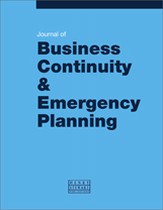Use of fear and threat-based messages to motivate preparedness: Costs, consequences and other choices Part One
Abstract
Over the last several decades, billions of dollars have been spent in the USA to increase its disaster readiness and response capacity. Virtually every poll and survey shows that the US public remains woefully underprepared. At the 2012 ‘Awareness to Action’ workshop convened by the Federal Emergency Management Agency (FEMA) and the American Red Cross to examine the future of the long-standing ‘Have a Kit. Make a Plan. Be Informed’ preparedness campaign, FEMA Administrator Craig Fugate acknowledged that traditional efforts have not ‘moved the preparedness needle’. The most frequently cited causes for lack of preparedness in the general public are consumer apathy, lack of time, lack of money and the lack of knowledge on how best to prepare. This paper explores the reliance on fear- and threat-based messages (also referred to as ‘fear appeals’ to promote preparedness as a significant cause for this lack of preparation. It will look at the growing body of fear research, how fear and threat appeals are pervasive in emergency management, as well as its costs, unintended consequences and the other choices that can be made. The author asserts that by eliminating fear and threat-based messages, new messengers can share readiness as an accessible, empowering and valued pursuit for all communities — entirely distinct from the disasters and threats that people face.
The full article is available to subscribers to the journal.
Citation
Jones, Ana-Marie (2013, January 1). Use of fear and threat-based messages to motivate preparedness: Costs, consequences and other choices Part One. In the Journal of Business Continuity & Emergency Planning, Volume 6, Issue 2. https://doi.org/10.69554/DVSS8534.Publications LLP
